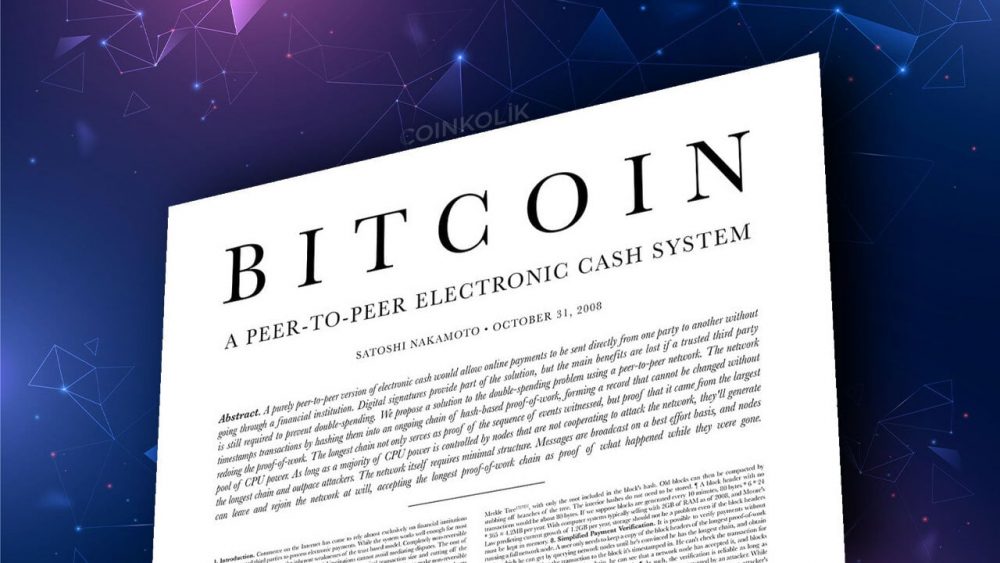The Bitcoin white paper provides a summary of how BTC was launched. In addition to the purpose of the project, technical details are also included in this document. In addition, this document contains some details that will surprise those who hear it. For example, the word “blockchain” is not used in the BTC white paper, instead a word meaning “time stamp server” in Turkish is used.
What is Bitcoin White Paper?
A white paper is a document that a project team or company writes and publishes the purpose, scope, innovations, philosophy and technical details of the product to be issued. They are written in an academic and technical language, different from the materials used in the marketing communication of the relevant product due to their content and purpose. Therefore, they carry an article view.
While the Bitcoin white paper reflects the planning process of BTC in the formation process, it also includes some details that users did not know before. The Bitcoin white paper was published on October 31, 2008, under the pseudonym Satoshi Nakamoto, in an email group called the Cryptography Correspondence Group. Except for the title of the white paper, the word “Bitcoin” is mentioned only in one place of the article. The document contains many interesting details like this.
We have compiled 14 interesting information about Bitcoin white paper that you have not heard before and that makes you say “no longer”…

14 Interesting Facts About The Bitcoin White Paper
1. 2 thousand 736 words contain 16 thousand 404 characters
Bitcoin white paper consisting of 2 thousand 736 words; It is shorter than the Magna Carta, the US Constitution, and the most recent US Infrastructure Bill. An average book is between 70,000 and 120,000 words.
Magna Carta:3 thousand 550 words
US Constitution:4,543 words
US Infrastructure Bill:2 thousand 700 pages
2. The trailer created a small storm
When the Bitcoin whitepaper was published, it created a lot of controversy. The moderators of the Cypherpunk mailing list then intervened and told Satoshi to take his ideas and go elsewhere and talk there.
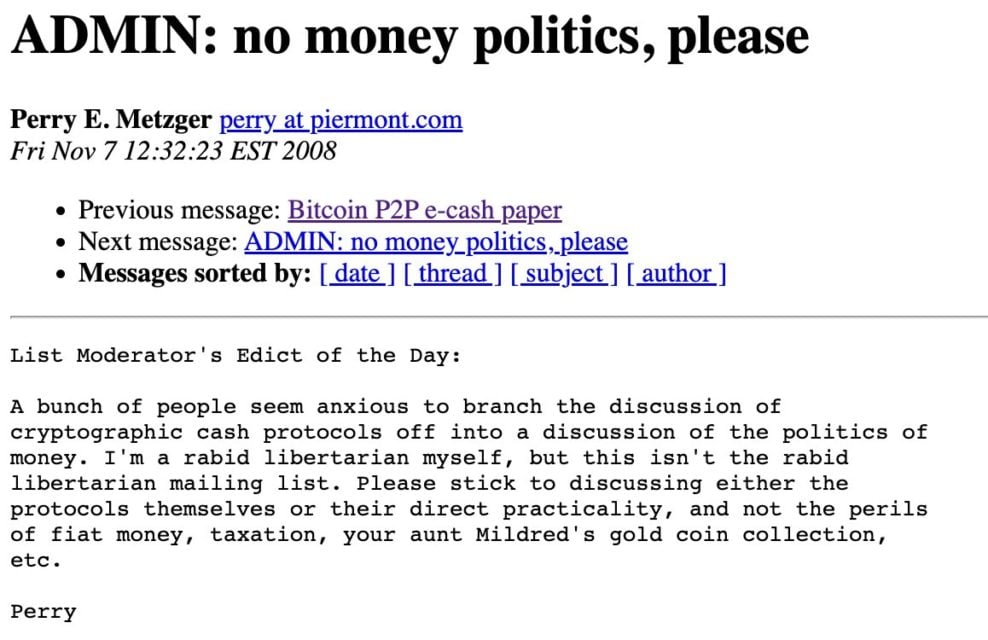
3. Satoshi is showered with criticism
The first public supporter of Bitcoin was Hal Finney, but he did not respond to an email sent to him until a week after the announcement on November 7. In this process, Satoshi was showered with a lot of criticism.
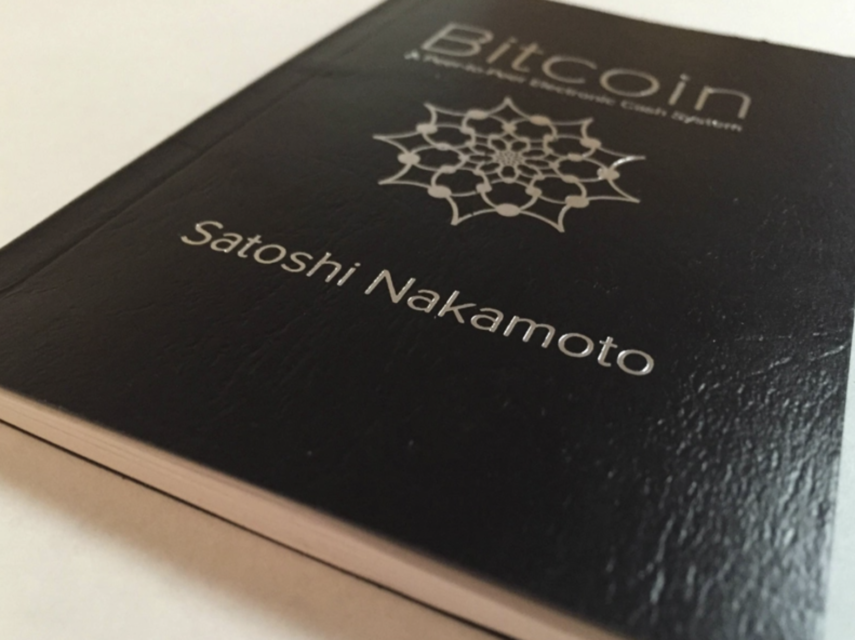
4. The word Bitcoin is only used twice!
The word Bitcoin is only mentioned twice in the white paper. One of them is in the title. It is also believed that Satoshi named Bitcoin quite late in this process. There is even evidence that he may have wanted to call it “Electronic Cash” or “Netcoin”.
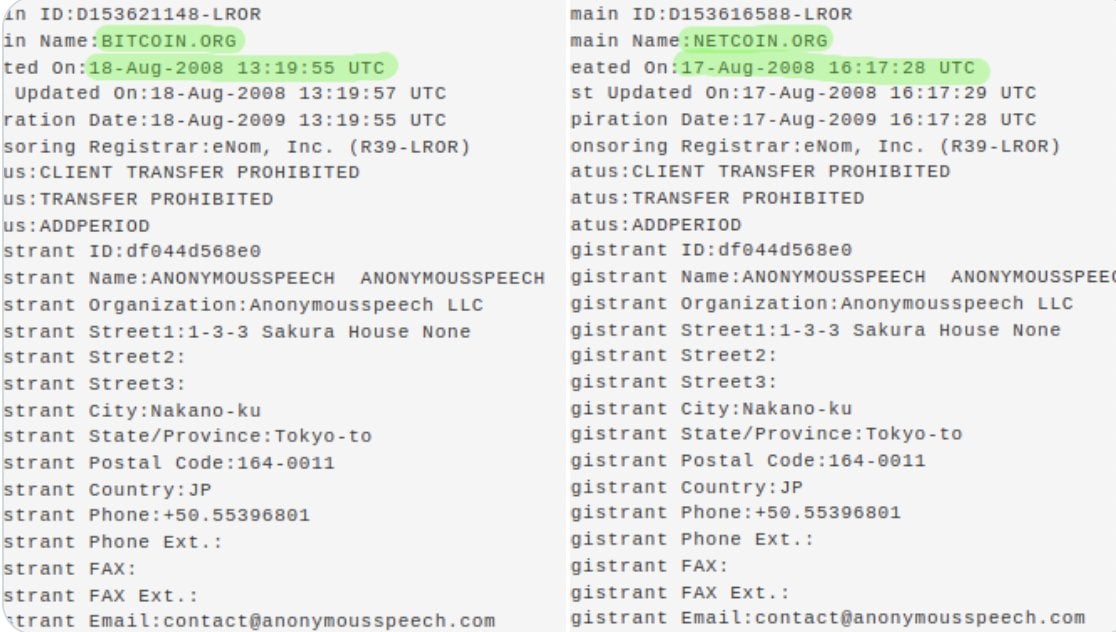
5. Code written before white paper
Satoshi wrote the Bitcoin code before writing the white paper. In his later posts, he stated that when the white paper was published globally, he had actually been working on Bitcoin for two years.
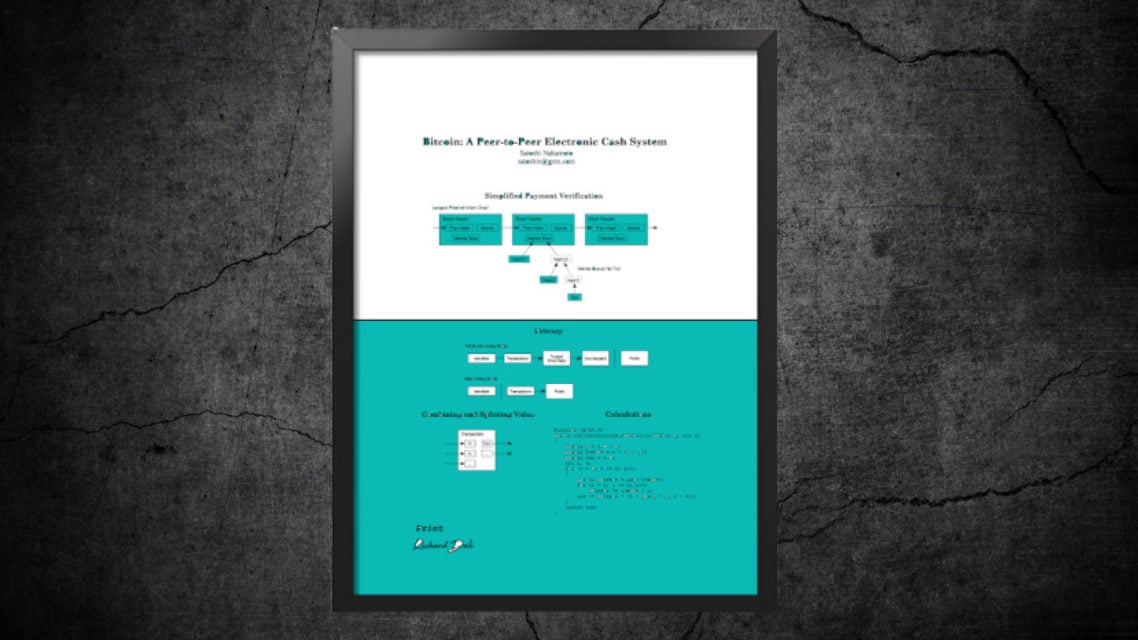
6. The word “Blockchain” is not included
The BTC white paper does not contain the word “blockchain”. Instead, Satoshi refers to the Bitcoin “blockchain” as a “timestamp server”. This nomenclature actually refers to the timekeeping function of BTC for the network, while also indicating that it is trying to replace central servers in previous digital cash systems.
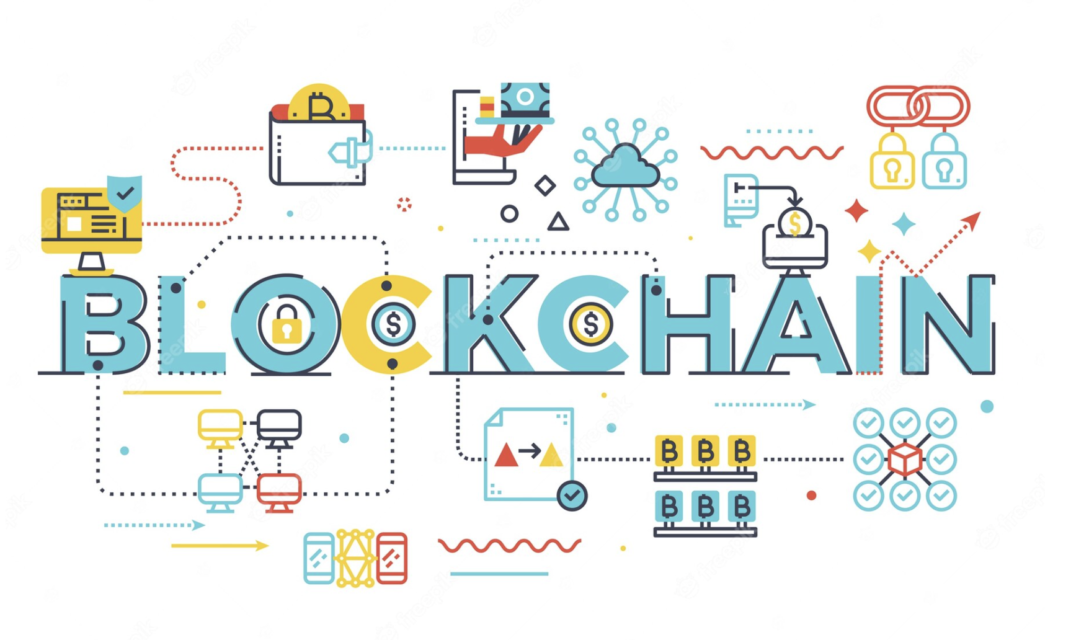
7. Seen as an alternative to the old system
Satoshi saw Bitcoin as an alternative to the “mint-based” model used by legacy digital cash systems. The case in question is a reference to previous work such as David Chaum’s off-chain DigiCash. Instead, the network was split into two layers, banks and users.
8. The word “block” was used the most
The most frequently mentioned word in the Bitcoin white paper is “block”, which is used 48 times in total. Blocks are groups of timestamped transactions on the Bitcoin blockchain.
9. Refers to 8 previous studies
The Bitcoin white paper references 8 past studies, including tried-and-true digital cash projects such as Wei Dei’s B-money and Adam Back’s Hashcash. Back is currently the only cryptographer in question who still actively contributes to BTC.
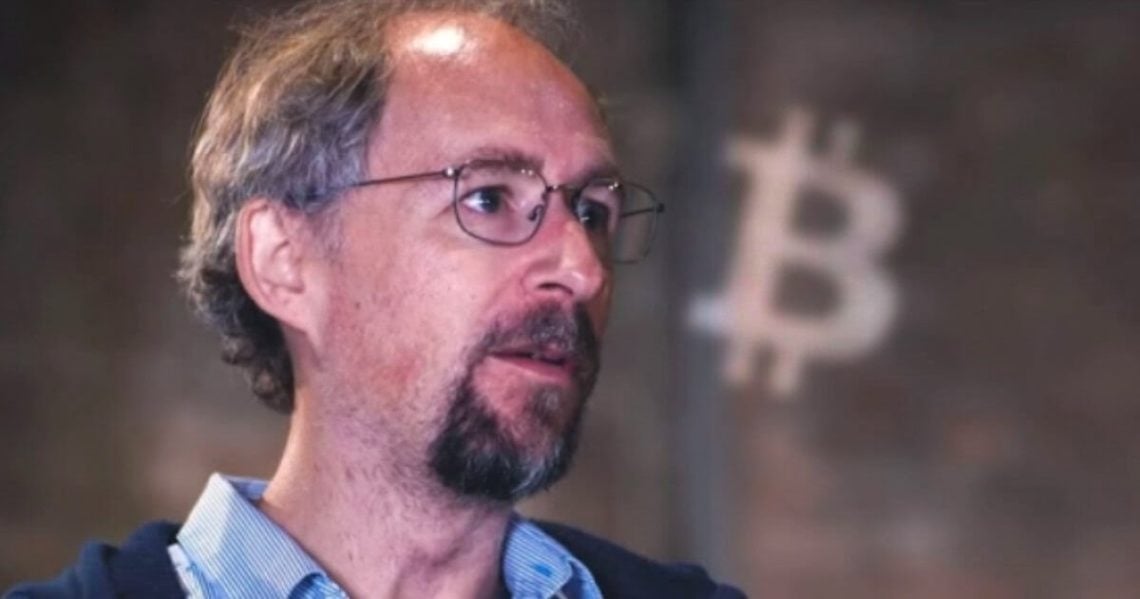
10. “CPU power used for BTC blocks”
The white paper states that “CPU power” is used to create Bitcoin blocks. It is not right to say this right now, nor is it wrong. Most of the production is handled by special computers called ASICs. Both provide the “computational power” the network needs to operate.
11. Some parts are out of date
Parts of the BTC white paper are no longer being worked on by the developers. In the article, Satoshi makes the first “scaling proposal” for Bitcoin. This method, called Simple Payment Verification, has since ceased to be a viable solution.
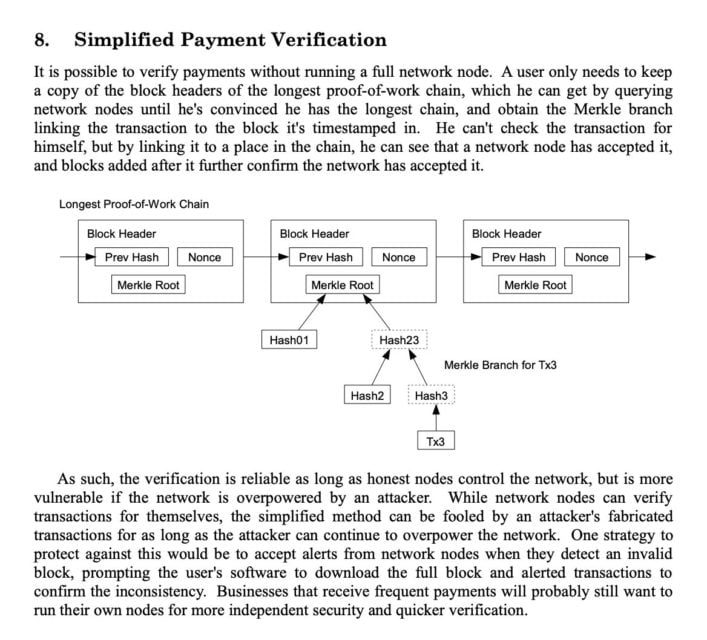
12. Public domain
Following the legal attacks, the Bitcoin whitepaper is now featured on websites around the world, including the US Government and the City of Miami. The document is in the public domain and may be retained free of charge.

13. Shows how BTC works
Bitcoin developers maintain an active list of inconsistencies, changes, and inaccuracies in Satoshi Nakamoto’s white paper. Since the publication of the document, more has been learned about how BTC works in a live environment.
14. Still on the site where it was originally published
The document is still live on the first website to publish the BTC white paper. It is currently translated into more than 40 languages.

